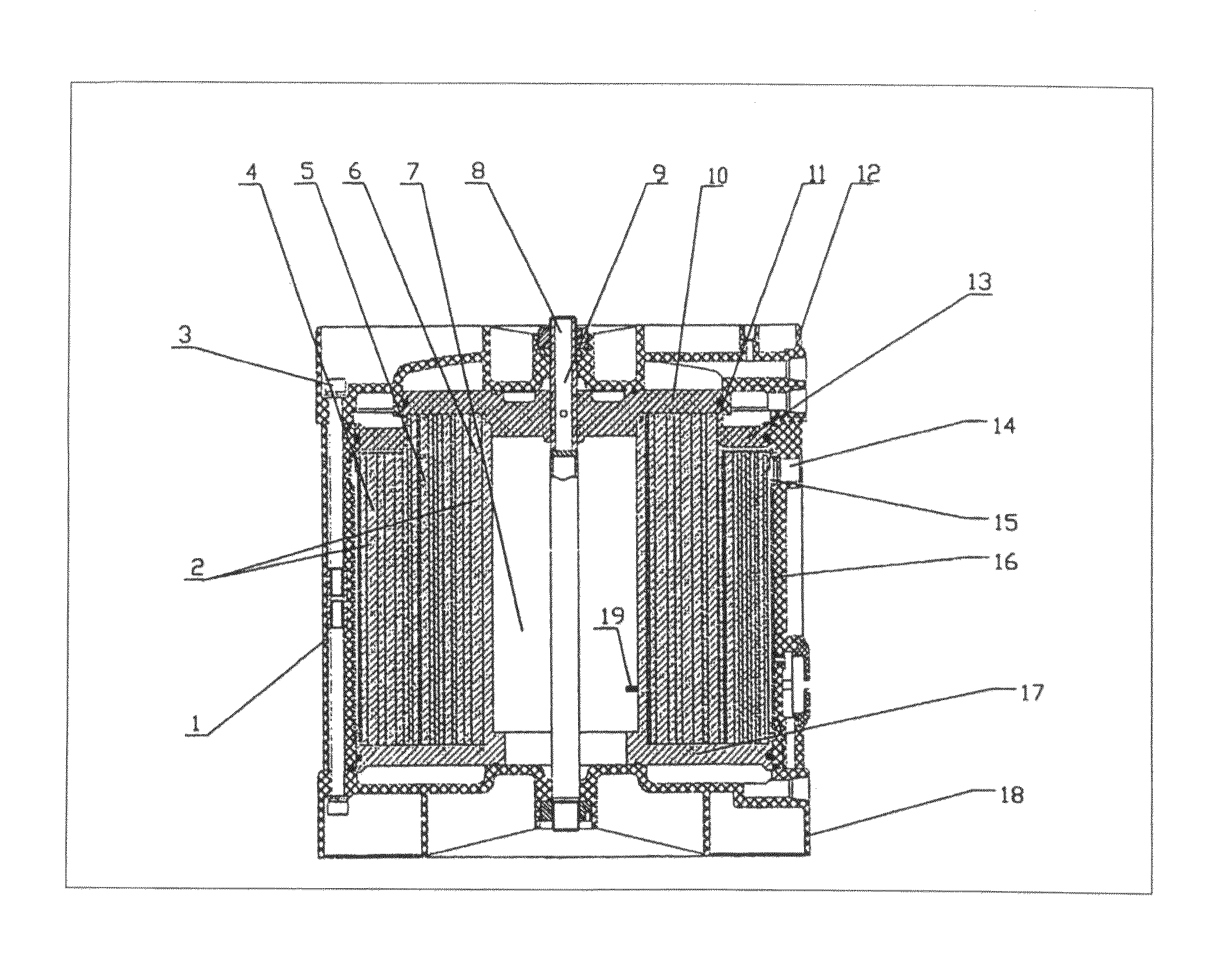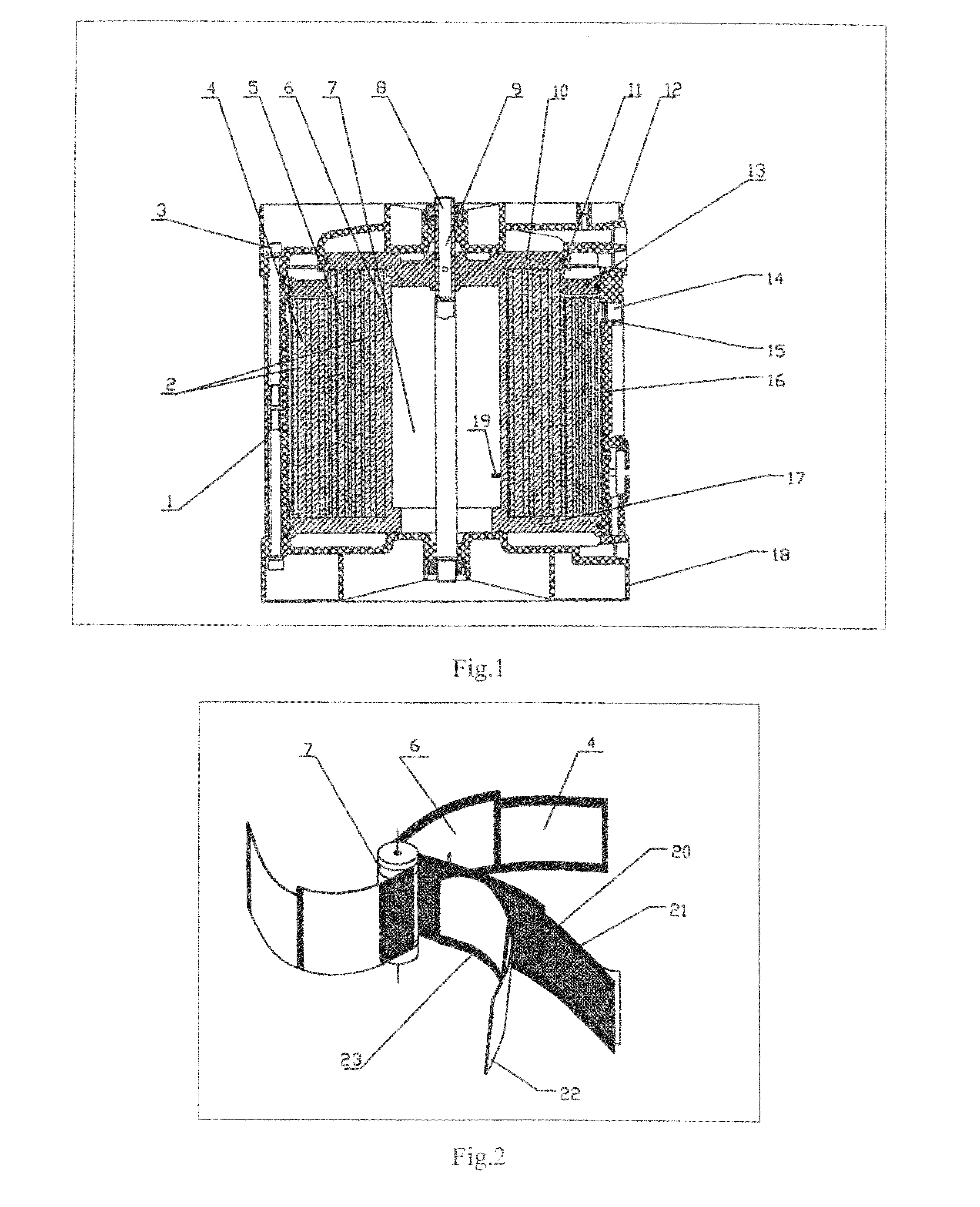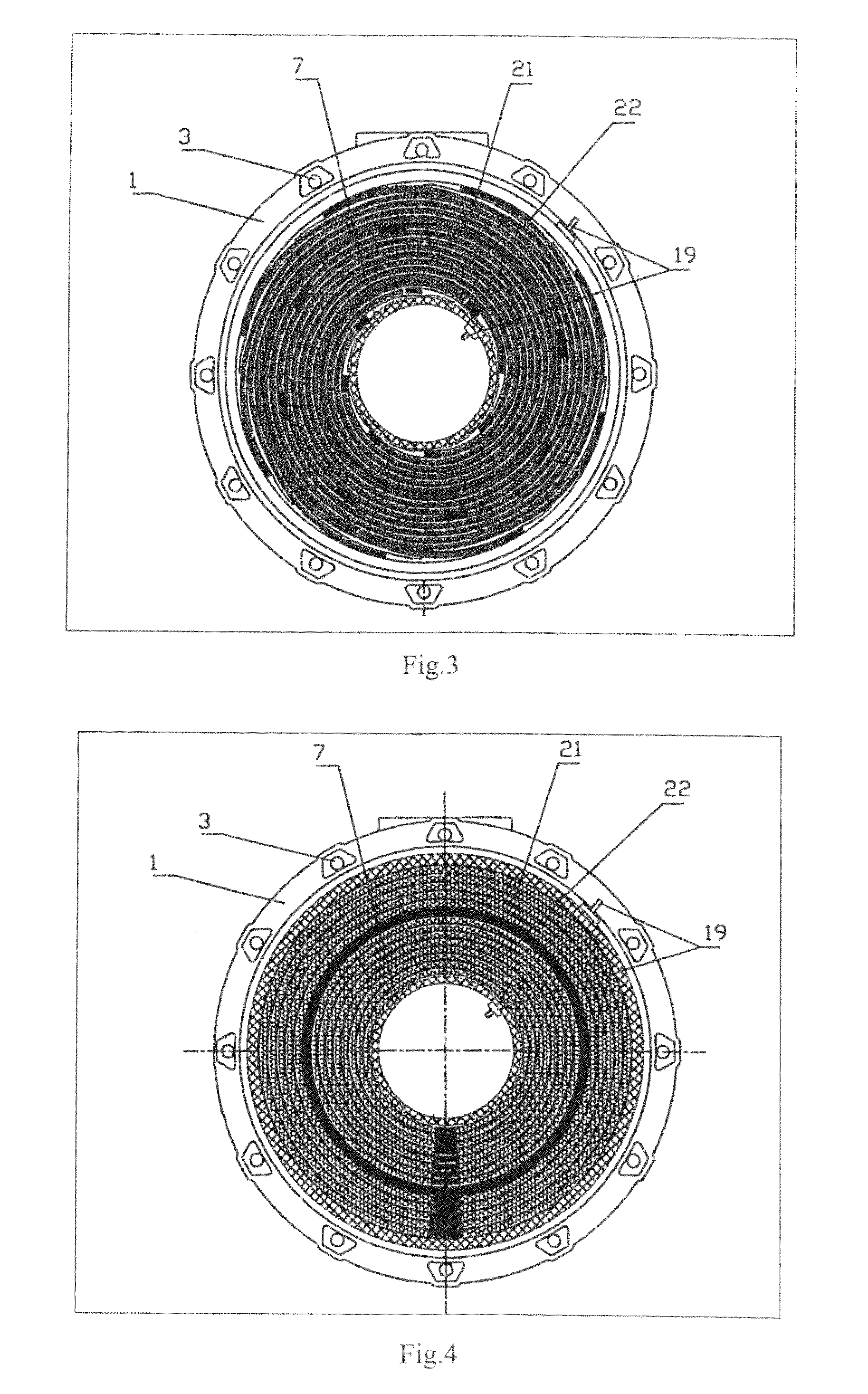Turn-back flow EDI
a technology of electrodeionization apparatus and flow, which is applied in the direction of electrodialysis, refrigeration machines, refrigeration components, etc., can solve the problems of irreversible damage to the membranes of the electrodeionization apparatus, poor pressure endurance, and high energy consumption, and achieves easy scaling and inability to maintain product quality
- Summary
- Abstract
- Description
- Claims
- Application Information
AI Technical Summary
Benefits of technology
Problems solved by technology
Method used
Image
Examples
example 1
[0061]As shown in FIGS. 1, 2 and 3, a turn-back EDI apparatus has central pipe 7 as central axis. The central pipe 7 is made of engineering plastics pipe and covered with ruthenium-coated titanium sheet, which is extended from the electrode terminal 19 to act as the anode of the apparatus. Eight pairs of cation exchange membrane and anion exchange membrane 22 are distributed evenly in the circumferential direction of the central pipe 7. In other words, the circumference of the central pipe 7 is divided into eight parts equally with each part connecting with one end of cation exchange membrane and anion exchange membrane pair 22. Of the two ends of the cation exchange membrane and anion exchange membrane pair 22 perpendicular to the central pipe 7, one is flat, and the other is a ladder shape with a sealing element 11 disposed on the ladder. The sealing element is an end ring used for sealing the apparatus. The dilute chamber and the concentrate chamber 5 are disposed alternatively o...
example 2
[0066]As shown in FIGS. 1, 2 and 4, fifteen pairs of cation exchange membrane and anion exchange membrane 22 wind around the periphery of the central pipe of the turn-back EDI apparatus. The two ends of each pair of the cation exchange membrane and the anion exchange membrane 22 perpendicular to the central pipe 7 are adhered by epoxy resin. The net-separating partition 21 is disposed within the adhered cation exchange membrane and anion exchange membrane 22, thereby forming concentrate chamber 5. The two ends of the cation exchange membrane and the anion exchange membrane 22 parallel to the central pipe 7 are connected with the concentrate gathering pipe and distributing pipe respectively. The fifteen pairs of cation exchange membrane and anion exchange membrane 22 wind around the central pipe to form a concentric structure. The space between two pairs of cation exchange membrane and anion exchange membrane 22 adjacent to each other is the dilute chamber. The two ends of the dilute...
example 3
[0067]As shown in FIGS. 1, 2 and 3, the cation exchange membrane and anion exchange membrane 22 wind around the central pipe 7. The dilute chamber and the concentrate chamber 5 are provided on the two sides of the ion exchange membranes 22. Ion exchange resin 2 is filled in the dilute chamber, and the net-separating partition 21 is filled in the concentrate chamber 5. The EDI apparatus is helical wound structure, and the outside of the helical wound structure is the outer crust 1. The upper cover 12 and the lower cover 18 are disposed in the upper and lower ends of the central pipe 7 and the outer crust 1, respectively. As is shown in the FIG. 7, the concentrated water flows from the concentrate inlet of central pipe 7 and sequentially passes through the inner side concentrate chamber unit 26 and the outside concentrate chamber unit 27, and then flows out from the concentrate outlet on the side of outer crust 1, thereby forming a partially opened flow passage. In the flow passage, t...
PUM
| Property | Measurement | Unit |
|---|---|---|
| thickness | aaaaa | aaaaa |
| height | aaaaa | aaaaa |
| height | aaaaa | aaaaa |
Abstract
Description
Claims
Application Information
 Login to View More
Login to View More - R&D
- Intellectual Property
- Life Sciences
- Materials
- Tech Scout
- Unparalleled Data Quality
- Higher Quality Content
- 60% Fewer Hallucinations
Browse by: Latest US Patents, China's latest patents, Technical Efficacy Thesaurus, Application Domain, Technology Topic, Popular Technical Reports.
© 2025 PatSnap. All rights reserved.Legal|Privacy policy|Modern Slavery Act Transparency Statement|Sitemap|About US| Contact US: help@patsnap.com



